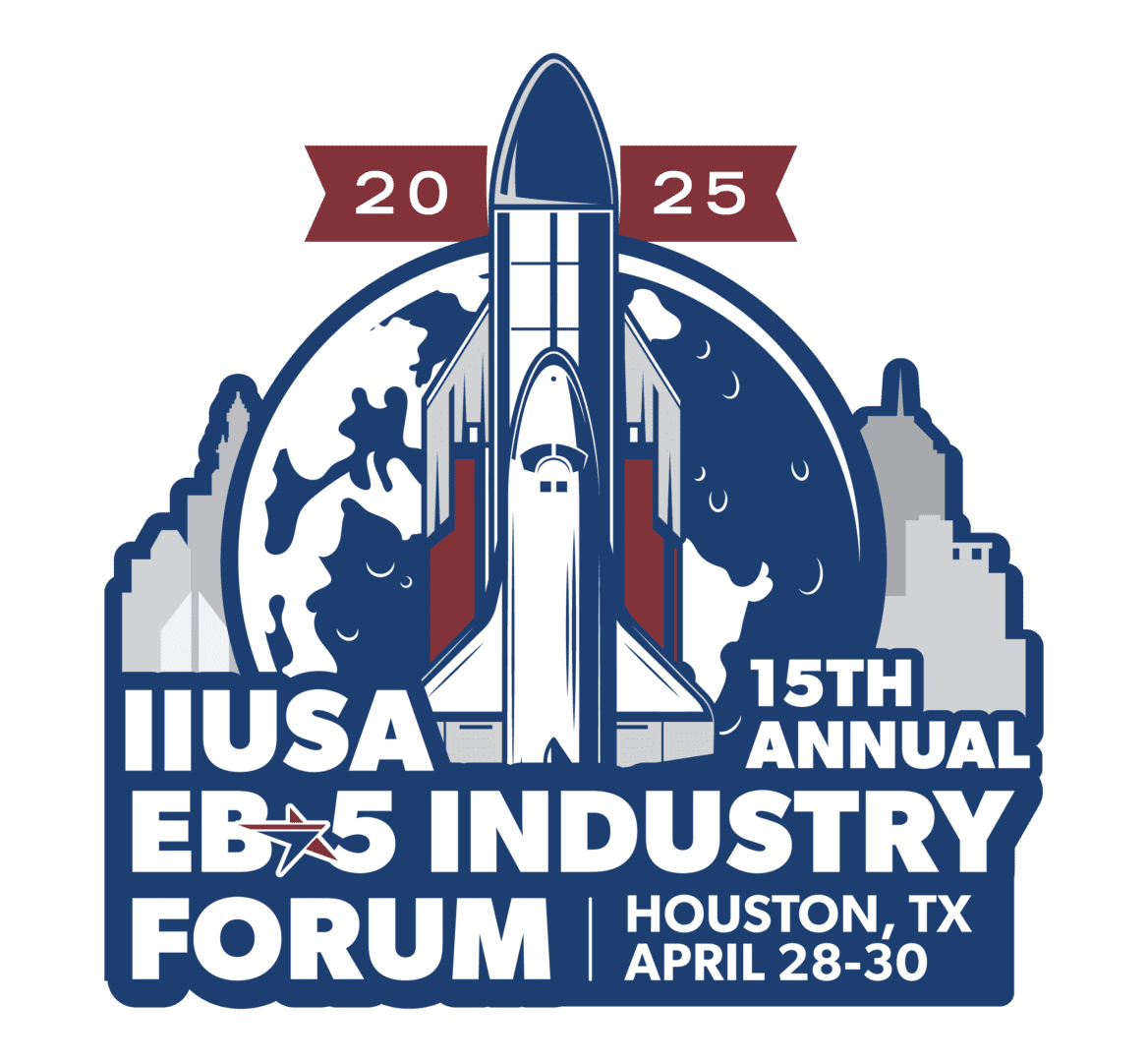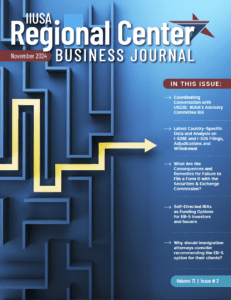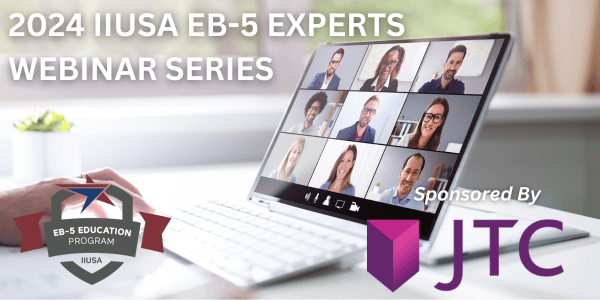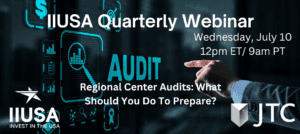What Happens During a USCIS Regional Center Audit? Now We Know.
By Laura Kelly | Vice President – Marketing, JTC
The recording of this webinar is available to access in IIUSA’s EB-5 Education Library. IIUSA members are entitled to complimentary access by using the coupon code available in the Member Portal or by emailing education@iiusa.org.
At a recent webinar, some of the first people to experience USCIS audits shared their experiences and how Regional Centers can prepare.
Ever since U.S. Citizenship and Immigration Services (USCIS) announced on April 9th, 2024, that it would finally commence with the Regional Center audits mandated by the EB-5 Reform and Integrity Act of 2022 (RIA), industry stakeholders have been looking for insight into how the audit process would actually be carried out.
To help Regional Centers better understand what to expect, IIUSA and JTC gathered a panel of individuals who were among the first to experience USCIS audits for an online event titled, “Regional Center Audits: What Should You Do To Prepare?” The panel shed light on how the process works, what was asked of them, and how they’d advise those preparing for future audits.
The Audit Process, Step One: Written Notice and Request for Documentation
The first step in the audit process is a written notification. According to Darrell Sanders, Vice President – Investment Programs for American Life Inc. and IIUSA Director, this communication actually came in the form of two letters, the first being a notice of audit and the second “about two pages of documentation that they wanted us to send them,” including “financial statements, staff lists and information about the owners in the Regional Center.”
Sanders and Noreen Hogan, President of CMB Regional Centers and Vice President of IIUSA, shared similar experiences of audits for companies with more than one Regional Center. Sanders said American Life owns multiple Regional Centers, but only two received audit notices, and while CMB has 19 Regional Centers, the audit was only related to one.
Hogan’s first piece of advice was that when you receive a notice, “look at the timeframe, because it is a lot of documents.” In CMB’s case, they had “two weeks and a day” to prepare what ended up being just shy of 2,500 pages.
The panel included those working under an equity model, a loan model, and a rent-a-center model. So far, it seems USCIS is asking for the same information regardless of the model being employed.
“To USCIS, it’s same, same, same,” said Jill Jones, General Counsel, JTC, and moderator at the event.
“I’m not sure that there’s a distinction at all between what a rent-a-center needs to do or should do and what a regular or traditional, if you will, regional center would do,” said Ozzie Torres, Shareholder, Torres Law, and IIUSA Editorial Committee Chair. “Maybe the preparation is slightly different, maybe some of the documentation is different, but ultimately what USCIS is looking for is going to be consistent, which is probably a good thing.”
“It was surprising how fast they wanted this back,” said Sanders. “If you’re not prepared, you’ve got two weeks to get 2,000 pages together.”
“Two weeks, for a rent-a-center that may not have its game together, is a short period of time to produce all that flow of funds stuff,” said Torres, stressing the need to prepare for an eventual audit before your name is called.
Step Two: Virtual Meeting and Additional Documentation
The next step is a virtual meeting with the auditors, held over Microsoft Teams. It appears the team for each audit will be different, and can include a range of expertise when it comes to EB-5, banking regulations, source of funds, and other topics. One thing the panelists noticed was that the auditors were as new to this process as they were.
“You could tell from the conversations that they were still trying to work it out too,” said Sanders. “This was the auditor’s first audit.”
Among the things some auditors needed to be educated about were the specifics of the models being used by each Regional Center.
“They were a little bit surprised when we said we were an equity model and some of the documents they had asked for don’t exist,” said Sanders.
After the virtual meeting, some additional information may be requested before the next step, a site visit and interview.
Step Three: In-person Meeting with Auditors
According to the panelists, auditors were flexible as far as the date the in-person audit would be scheduled.
“USCIS was very accommodating of scheduling it when all the key personnel that we wanted could be there,” said Hogan, who noted that the size of the team from USCIS – and the individuals who attend the meeting – may differ from the initial call. In fact, she said, only one person from USCIS was a part of both their initial virtual meeting and in-person audit.
Both Sanders and Hogan said their Regional Centers took the extra step of preparing PowerPoint presentations about their ownership, staff, and current projects.
“They actually thanked us for it,” said Sanders. “It kind of just got the conversation going.”
The in-person meetings involved discussions with specific staff members and went in-depth on movement of funds and how documents are secured.
“It includes things like the formation of the entities and the governance of those entities as well as, operationally, what is the flow of funds and how do you track it and things like that,” said Jones.
Auditors wanted to be walked through the use of investor-facing software platforms as well, and asked about third-party fund administration. According to Hogan, the auditors pre-selected specific Limited Partners and asked to go through their flow of funds information.
“They wanted to see bank statements, letters documenting movement of funds from one place to another, so it was really all about the flow of funds and auditing that for random Limited Partners,” she said.
“They had selected transactions and investors to drill down on,” said Sanders. “I left day one with some homework,” he added, but said the process went well enough that the auditors “did not have to come back on day two.”
Step Four: What Comes Next?
While the panelists were at different stages of the audit process, those who’d completed their audits had yet to hear back about the results. USCIS has made it clear that refusal to comply with an audit can lead to termination of a Regional Center, but it’s not clear what other adverse consequences may come from a failed audit.
“We know that if you are just being an obstructionist, that’s bad,” said Torres. However, “there’s not necessarily adverse consequences from getting dinged at an audit.”
Overall, the panelists stressed that preparation is key, and if proper compliance procedures are in place, there’s nothing to worry about.
“If you’re running your Regional Center as a true EB-5 business and this is what you do for a living, most of the documentation that they’re asking you for” should be things you already have and potentially have already provided to USCIS, said Hogan.
“Be in contact with your fund administrators to get those records,” said Jones. “Invite them to your audits so they can show the screenshots. This is part of the service that you’ve hired us to do. Make sure you take advantage of that.”
“If you’re expected to have it, it shouldn’t be a panic,” agreed Torres. “Now’s the time to prepare, until you get your letter”
“At the end of the day, it’s about integrity,” concluded Jones. “Ultimately, what we want is for the EB-5 program to be authorized permanently. This is a good program, and the only way to get it to be a permanent program is to show that it is doing the good that it’s intended to do.”









